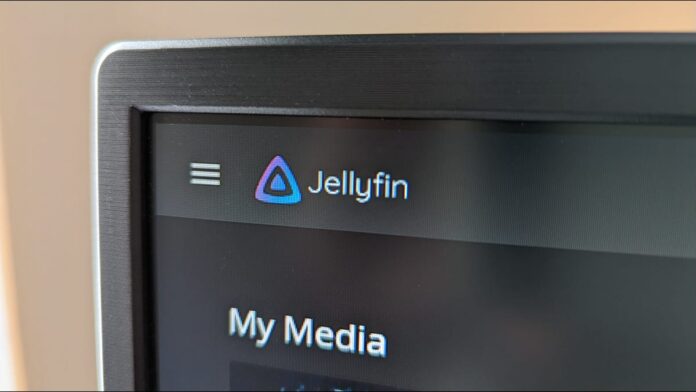[ad_1]
On Windows, you can update Jellyfin by downloading the latest version and installing it on top of the existing version. On Mac, download the latest DMG and copy it to the Applications folder, replacing the older version. On Linux, use your package manager to update Jellyfin.
Jellyfin is a free and open source Plex alternative for streaming media locally and remotely. The server does not include an auto-updater, so updating Jellyfin is a manual process.
Check which version of Jellyfin you have installed
Before trying to update Jellyfin, it’s a good idea to check if it’s necessary. You can do this by starting the server and launching the web user interface on the platform of your choice. By default, it is located at localhost:8096/web/index.html.
Access the sidebar on the left side of the screen and click on “Control Panel” under the “Administration” heading.

At the top of the screen you should now see the name of your server, followed by the currently installed version. Make a note of this number, as you’ll need to verify it in the next step.
How to update Jellyfin on Windows
Before you start, stop your Jellyfin server if it is running. You can do this by finding the Jellyfin icon in the system tray in the lower right corner of your Windows desktop, right-clicking on it, and then choosing “Exit” to exit the server.

Now head over to the Windows release page and take a look at the latest stable server download at the top of the list. The version number is in the file name. If the two versions match, you already have the latest version installed. If you see a newer version, download the executable.
With your server stopped and the new version ready to install, all you need to do is install the new version of Jellyfin on top of the old one. When you run the installer, you will be notified that an existing Jellyfin installation has been detected and your server settings will be preserved.

Click “OK” to continue, then follow the upgrade process by clicking “Next” as if you were installing the server for the first time. When everything is complete, the media server will be up to date.
How to update Jellyfin on Mac
First, stop the Jellyfin server using the menu bar icon in the top right corner of your macOS desktop. Click on the Jellyfin icon and then choose “Quit Jellyfin Server” from the menu that appears.

Now is the time to download the latest version of the Jellyfin server from the macOS release page. Verify that the version you are downloading is newer than the version you currently have installed (the version number is in the file name).
Once you have downloaded the latest version of Jellyfin, mount the DMG by double-clicking on it and dragging the “Jellyfin” application into the “Applications” folder (you can use the shortcut inside the disk image to do this).

You will be notified that a Jellyfin server version already exists inside the applications folder. Click “Replace” to replace the old app with the new one.

Now cast Jellyfin. You’ll see the standard macOS “new app” alert asking if you really want to open an app you’ve downloaded from the internet. Click “Open” to start the server. You will not lose any of your existing settings or media information by doing this.

Alternatively, if you installed Jellyfin using the macOS Homebrew command-line package manager, you can update it using a single command. Open Terminal and run the following:
brew upgrade jellyfin
How to update Jellyfin on Linux
The way you update Jellyfin on Linux largely depends on the version of Linux you’re running. The upgrade instructions for the most common Linux distributions (Ubuntu and Debian) are fairly simple, assuming you have followed the instructions. curl either wget installation instructions on the Linux download page.
These add the Jellyfin repository to your package manager. You can then keep everything up to date by starting Terminal and running:
sudo apt update
This will get a list of packages that can be updated. Now you can activate those updates using:
sudo apt upgrade
To update just Jellyfin (or any individual app), run sudo apt install jellyfin instead. You’ll see a message letting you know that Jellyfin is already running the latest version, or you’ll get the option to upgrade to a newer version where available.

Other distributions have their own package managers. For example, Jellyfin’s Arch release uses the Arch user repository. CentOS and Fedora have separate file downloads, which you can install just like you would a standard RPM file.
How to update the Docker version of Jellyfin
The easiest way to update the Jellyfin container within Docker is to use Watchtower. This Docker container will watch other containers’ base images for updates and pull them down as needed. By default, it will watch all containers for changes, although you can exclude certain containers by following the instructions in the Watchtower documentation.
Once you’ve installed Docker and have Jellyfin running, download and start Watchtower by running the following command in Terminal:
docker run -d --name watchtower -v /var/run/docker.sock:/var/run/docker.sock containrrr/watchtower
You should now notice a new container running the Watchtower image appearing in the Docker container menu. Make sure it is running, then click on the container and explore the “Logs” section to make sure everything is working correctly. You should see that Watchtower has logged you by checking all containers for updates and a log notifying you of the next check (default checkout 24 hours later).

Jellyfin and other Plex alternatives
Jellyfin is a high-capacity media server that doesn’t put anything behind a paywall, unlike Plex. The desktop versions (Windows, macOS, and Linux) are much easier to use compared to the containerized application (Docker), which instead relies on usage via the command line.
Jellyfin is just one of the Plex rivals that you can try. Check out our other recommended Plex alternatives, including Kodi and Emby.
[ad_2]
